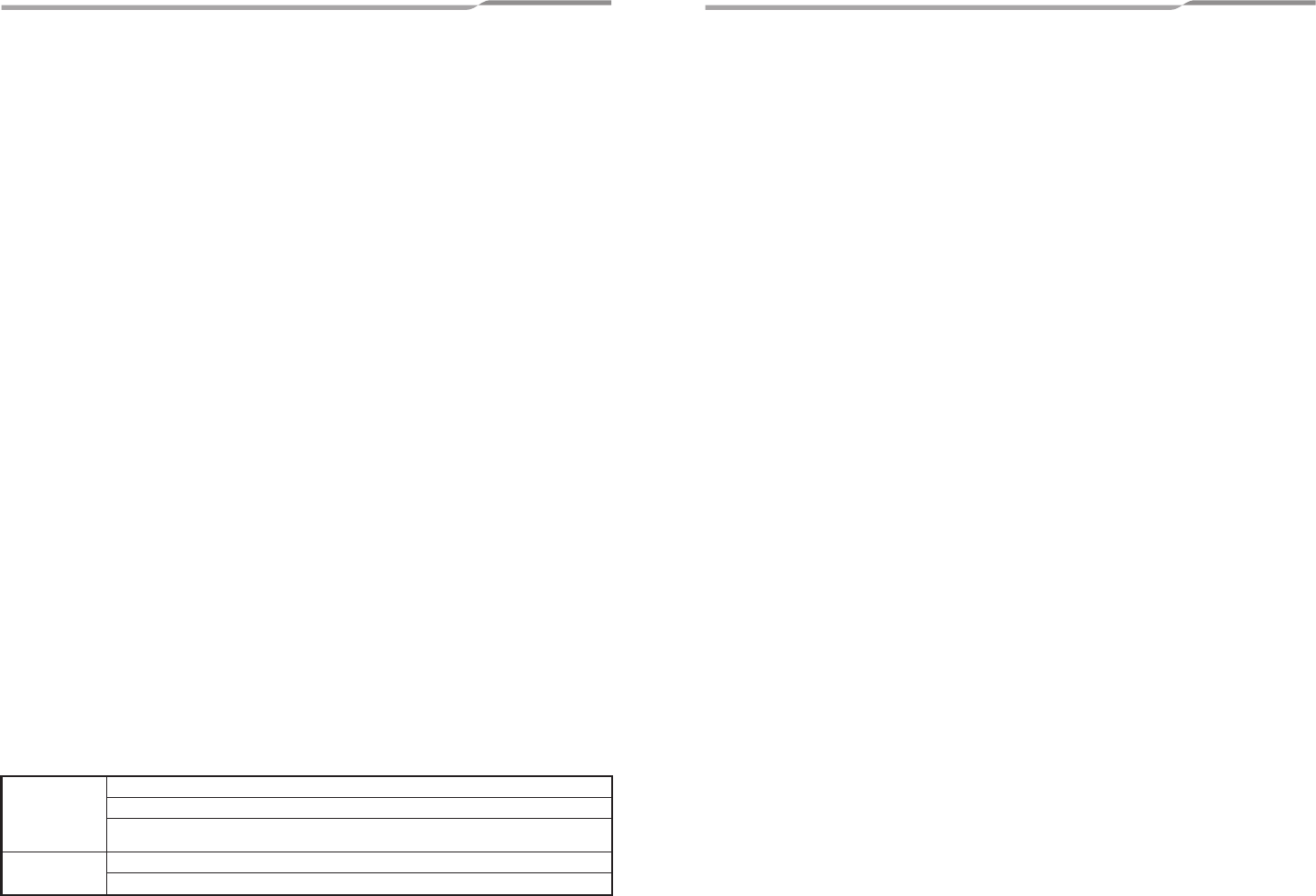
– 80 –
Concealed Duct High Static Pressure
Owner’s Manual
Concealed Duct High Static Pressure
Owner’s Manual
10 AIR CONDITIONER OPERATIONS AND
PERFORMANCE
3 minutes protection function
3-minutes protection function prevents the air conditioner from starting for initial 3 minutes after the main power switch/
circuit breaker is turned on for re-starting the air conditioner.
Power failure
Power failure during operation will stop the unit completely.
• To restart the operation, push the ON/OFF button on the remote controller.
• Lightning or a wireless car telephone operating nearby may cause the unit to malfunction.
Turn off the main power switch or circuit breaker and then turn them on again.
Push the ON/OFF button on the remote controller to restart.
Heating characteristics
Preheating operation
The air conditioner will not deliver warm air immediately after it is turned on.
Warm air will start to flow out after approximately 5 minutes when the indoor heat exchanger warmed up.
Warm air control (In heating operation)
When the room temperature has reached the set temperature while the outdoor unit is stopping, the indoor unit discharges
wind with a very small air volume.
Defrosting operation
If the outdoor unit is frosted during the heating operation, defrosting starts automatically (for approximately 2 to 10 minutes)
to maintain the heating capacity.
• The fans in both indoor and outdoor units will stop during the defrosting operation.
• During the defrosting operation, the defrosted water will be drained from the bottom plate of the outdoor unit.
Heating capacity
In the heating operation, the heat is absorbed from the outside and brought into the room.
This way of heating is called heat pump system. When the outside temperature is too low, it is recommended to use
another heating apparatus in combination with the air conditioner.
Attention to snowfall and freeze on the outdoor unit
• In snowy areas, the air inlet and air outlet of the outdoor unit are often covered with snow or frozen up.
If snow or freeze on the outdoor unit is left as it is, it may cause machine failure or poor warming.
• In cold areas, pay attention to the drain hose so that it perfectly drains water without water remaining inside for freeze
prevention. If water freezes in the drain hose or inside the outdoor unit, it may cause machine failure or poor warming.
Air conditioner operating conditions
For proper performance, operate the air conditioner under the following temperature conditions:
If air conditioner is used outside of the above conditions, safety protection may work.
Cooling operation
Heating operation
Outdoor temperature: –15°C to 46°C
Room temperature : 21°C to 32°C (Dry bulb temp.), 15°C to 24°C (Wet bulb temp.)
[CAUTION]
Room relative humidity – less than 80 %. If the air conditioner operates in excess
of this figure, the surface of the air conditioner may cause dewing.
Outdoor temperature: –20°C to 15°C (Wet bulb temp.)
Room temperature : 15°C to 28°C (Dry bulb temp.)
11 INSTALLATION
Do not install the air conditioner in the following places
• Do not install the air conditioner in any place within 1 m from a TV, stereo, or radio set.
If the unit is installed in such place, noise transmitted from the air conditioner affects the operation of these appliances.
• Do not install the air conditioner near a high frequency appliance (sewing machine or massager for business use, etc.),
otherwise the air conditioner may malfunction.
• Do not install the air conditioner in a humid or oily place, or in a place where steam, soot, or corrosive gas is generated.
• Do not install the air conditioner in a salty place such as seaside area.
• Do not install the air conditioner in a place where a great deal of machine oil is used.
• Do not install the air conditioner in a place where it is usually exposed to strong wind such as in seaside area.
• Do not install the air conditioner in a place where sulfureous gas generated such as in a spa.
• Do not install the air conditioner in a vessel or mobile crane.
• Do not install the air conditioner in an acidic or alkaline atmosphere
(in a hot-spring area or near a chemicals factory, or in a place subject to combustion emissions).
Corrosion may be generated on the aluminum fin and copper pipe of the heat exchanger.
• Do not install the air conditioner near an obstacle (air vent, lighting equipment, etc.) that disturbs discharge air.
(Turbulent airflow may reduce the performance or disable devices.)
• Do not use the air conditioner for special purposes such as preserving food, precision instruments, or art objects, or
where breeding animals or growing plants are kept. (This may degrade the quality of preserved materials.)
• Do not install the air conditioner over an object that must not get wet.
(Condensation may drop from the indoor unit at a humidity of 80% or more or when the drain port is clogged.)
• Do not install the air conditioner in a place where an organic solvent is used.
• Do not install the air conditioner near a door or window subject to humid outside air.
Condensation may form on the air conditioner.
• Do not install the air conditioner in a place where special spray is used frequently.
Be careful with noise or vibrations
• Do not install the air conditioner in a place where noise by outdoor unit or hot air from its air outlet annoys your neighbors.
• Install the air conditioner on a solid and stable foundation so that it prevents transmission of resonating, operation noise
and vibration.
• If one indoor unit is operating, some sound may be audible from other indoor units that are not operating.
– 19 – – 20 –


















